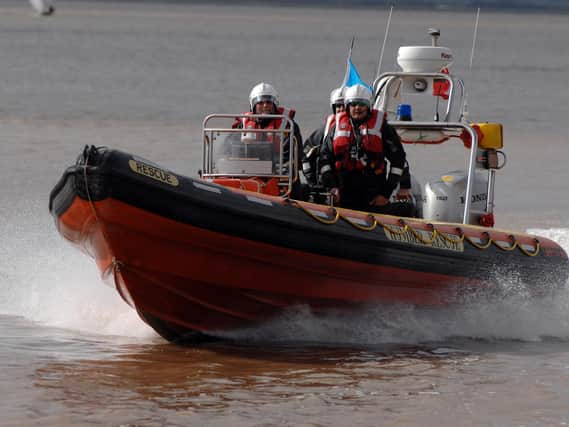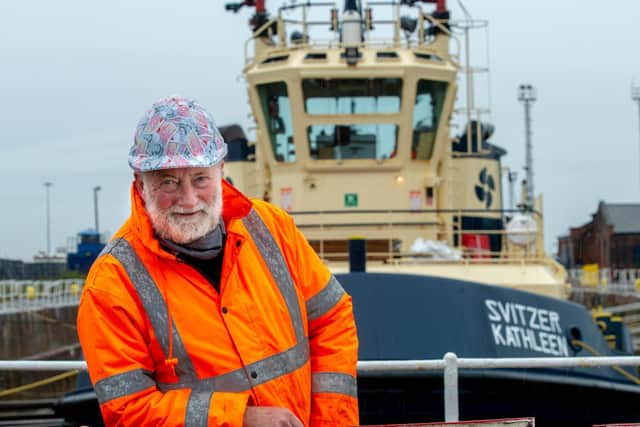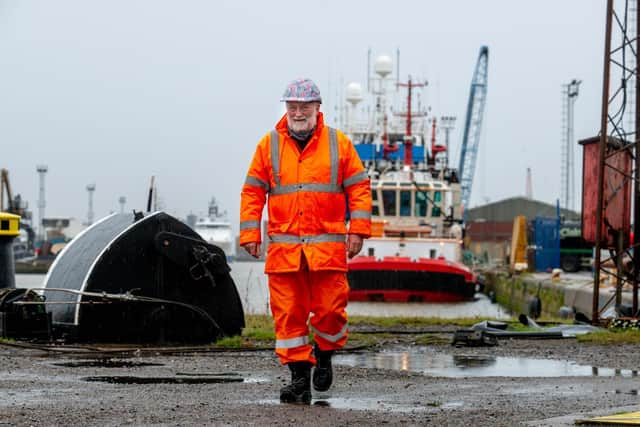Hull Docks' Dave Roberts retires after 36 years - but vows to continue as chairman of Humber Rescue


Dave started out as a self-employed industrial chemist working mainly in shipping in 1984, after coming ashore from the Merchant Navy.
Since then he has had just five days off - and that was for the weddings of his son and daughter.
Advertisement
Hide AdAdvertisement
Hide AdHe got involved with the inshore lifeboat after going to see a boat in the Hessle garden of founder Paul Berriff, became crew member number 11, and is now the longest serving in the unit, 30 years on.


Dave, who does the accounts and still goes out on rescues, hopes to take part in sea trials next week in Liverpool of a new - albeit second-hand - rescue boat.
Fundraising had reached £80,000 when Covid-19 struck and everything ground to a halt. The remainder of the £115,000 cost came out of the reserves and the sale of a spare engine.
Rescuing people, he says is the best part of the job. And he wants to continue "to keep Humber Rescue on the right track financially and the crew on the straight and narrow."
Advertisement
Hide AdAdvertisement
Hide AdAs a chemist his job involved testing enclosed spaces, normally tanks, for lack of oxygen and toxic chemicals, which can prove fatal. In 2007 he was called in by the Marine Accident Investigation Branch to investigate the deaths of three men who succumbed to lack of oxygen after going into a chain locker on board a ship off Spurn Point.


Of the hundreds of call-outs, he has vivid memories of going to rescue an RAF pilot who ejected with his navigator seconds before his stricken GR4 fighter-bomber crashed into the river Humber in 2002.
"We found the pilot around three miles from where the others were looking. It was quite rough and we had to navigate through the fuel from the plane which was quite dangerous as it was going through our engines."
Dave wanted to leave the pilot in the water until the helicopter arrived in case he was badly injured. "He told me in no uncertain terms he wanted out," he said.
Advertisement
Hide AdAdvertisement
Hide AdAnother was swimming out with crew member Roger Bennett to rescue a woman who had fallen from the Humber Bridge on a December evening, and was being carried by the current close to their boathouse. "We just put our suits on and swam out to her, she was about 130 yards off." The woman survived.
On Friday morning The Yorkshire Post caught up with Dave, in his trademark helmet covered in 50 pound notes, at William Wright Dock.
He said: "In 36 years I've never turned a job down or been late. I have a helmet with 50 pound notes on it, because a lot of the dry dock workers go 'kerching' when they see me, because every time I go there it's costing someone money."
The day started at 3,30am and he had just been to test a tank prior to the crew cleaning it out.
Advertisement
Hide AdAdvertisement
Hide AdMeanwhile out on the river the lifeboat had been out to two cabin cruisers, which had grounded in quick succession.
Call-outs for 2020 are already well above the rolling average, which Dave puts down to the terrible toll Covid-19 is exacting on people's mental health.
"Often we've been out in the middle of the night on the lifeboat and then I've started work, " said Mr Roberts, who was awarded the Queen's Award for Voluntary Service in 2012.
"Why do I carry on? It's about putting back - putting years of seafaring experience into operation."
Comment Guidelines
National World encourages reader discussion on our stories. User feedback, insights and back-and-forth exchanges add a rich layer of context to reporting. Please review our Community Guidelines before commenting.